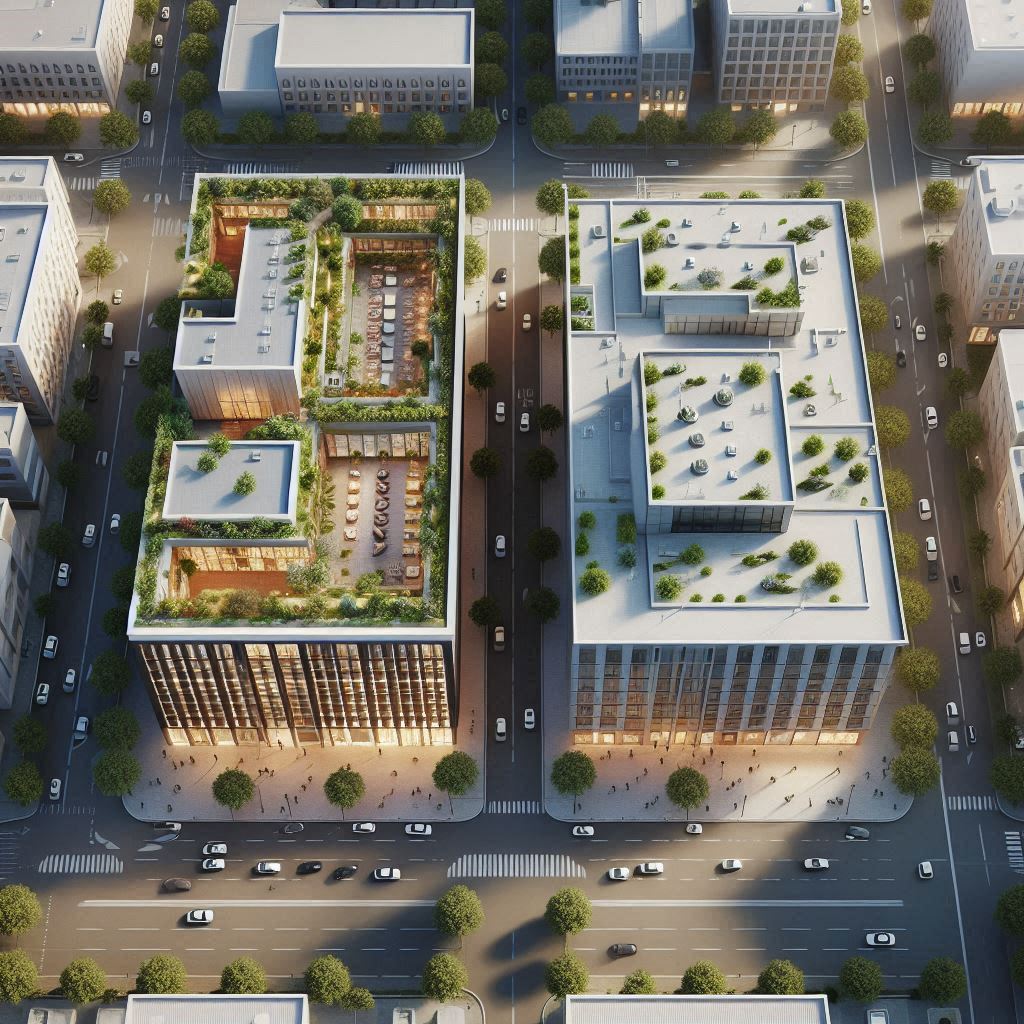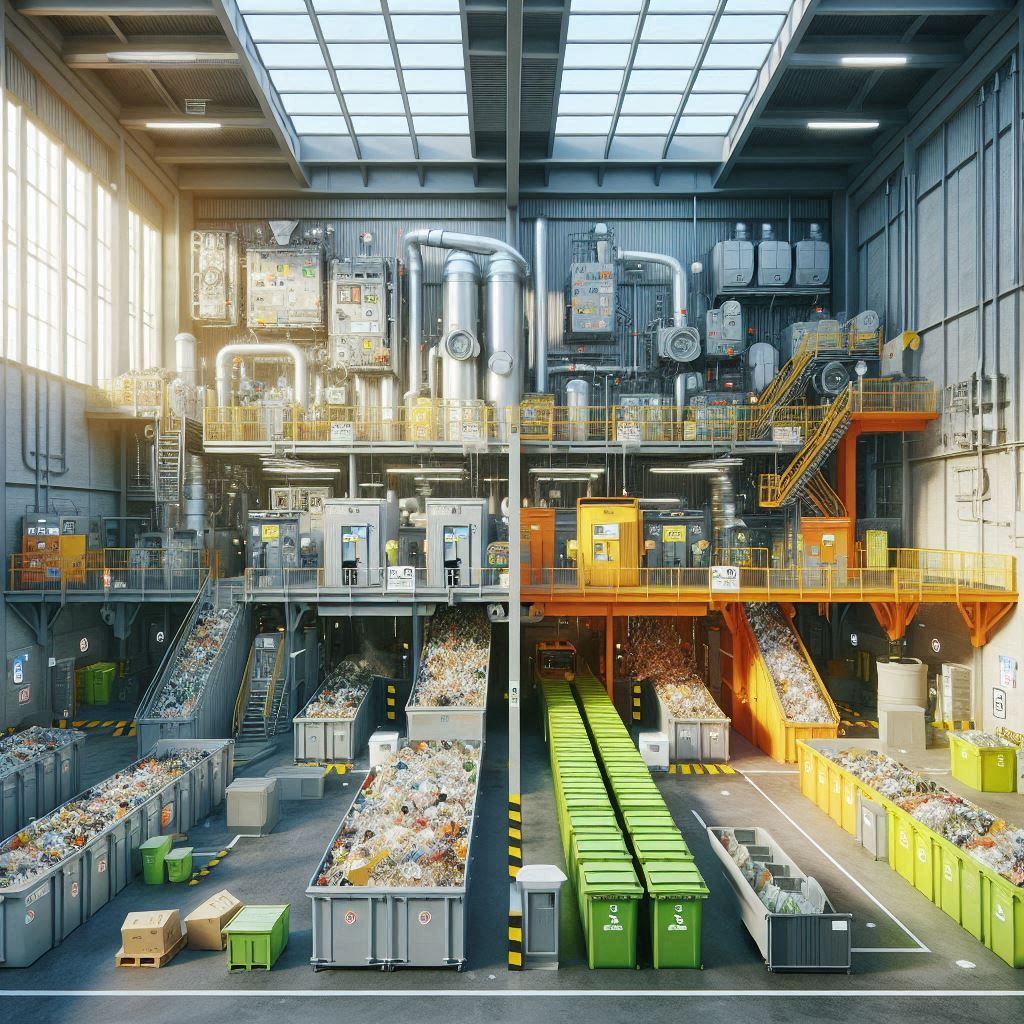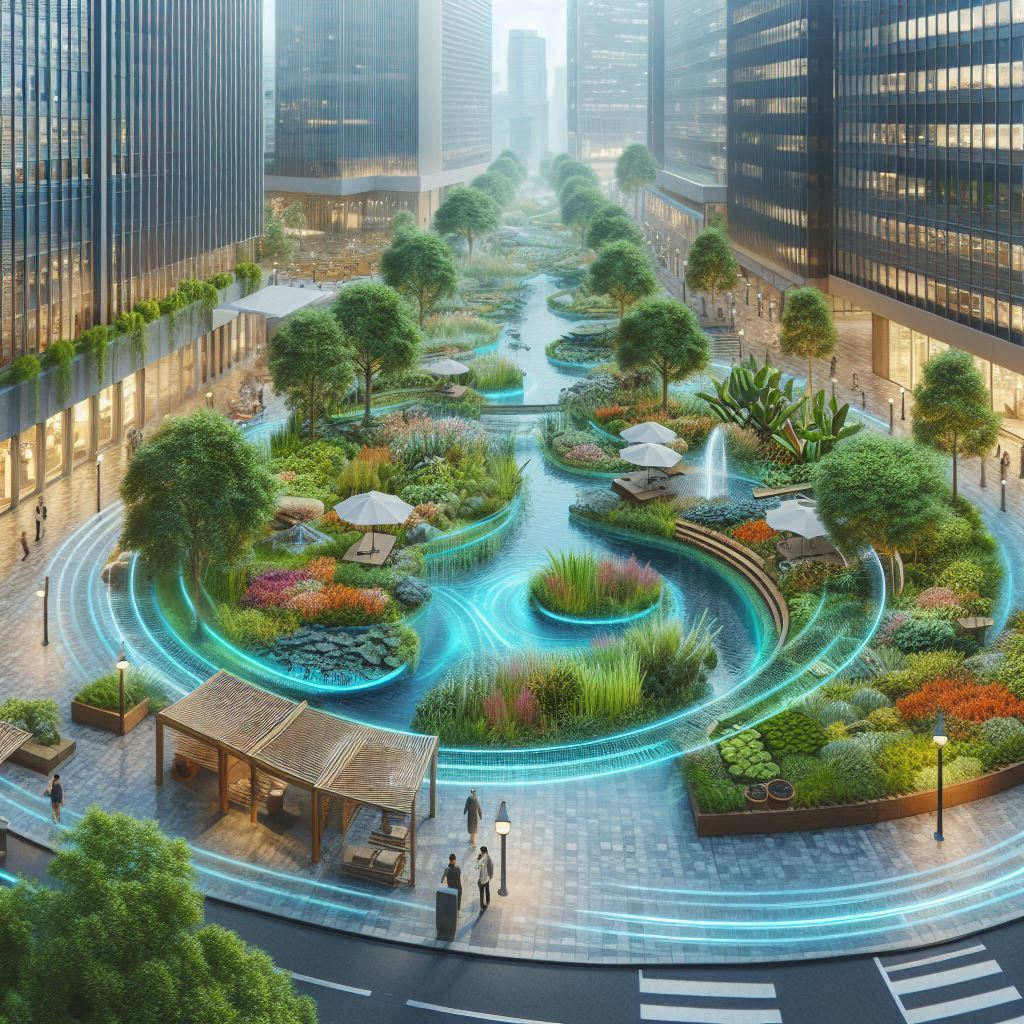As the need for sustainable development intensifies in our modern world, discerning the difference between green and traditional buildings is more crucial than ever. This blog post spotlights the substantial contrasts between LEED (Leadership in Energy and Environmental Design) certified buildings, which exemplify the best in sustainable construction, and Non-LEED buildings that adhere to conventional practices. While both aim to provide shelter and functionality, the approach and execution of these goals are remarkably different, with implications that ripple out to environmental health and human well-being.
Introduction

The construction industry stands at the forefront of our fight against climate change. With buildings accounting for a significant portion of the world’s energy consumption, the distinction between LEED certified buildings and Non-LEED buildings is not just a matter of badge earning; it’s about making a positive, lasting impact on our environment. LEED certification, governed by the U.S. Green Building Council (USGBC), is a prestigious standard for designing, constructing, and operating the world’s greenest, most energy-efficient, and high-performing buildings. This blog delves into what makes LEED buildings stand out and why they’re the future of the construction industry.
Definition of LEED
LEED is the most widely used green building rating system in the world. It provides a framework for efficient and cost-effective green buildings, which are designed to save money, improve energy and water efficiency, reduce carbon emissions, and create a healthier environment for residents, workers, and the larger community. LEED certified buildings are evaluated across several categories including energy usage, air quality, and material selection. The program encourages architects and builders to innovate and adopt sustainable construction practices that treat the environment as a key stakeholder in the building process.
Definition of Non-LEED
On the opposite side are Non-LEED buildings which typically conform to the minimum standards of local building codes. Such buildings might not incorporate sustainable construction practices or efficient building systems, potentially leading to higher environmental pollution, energy and water usage, and increased lifecycle costs. While non-LEED buildings may save on initial investment costs, these savings are often short-lived when factoring in the long-term economic and environmental impact.
Difference 1: Energy Efficiency
Energy efficiency is a cornerstone of LEED Buildings. They are designed to consume less power and reduce waste through airtight building envelopes, efficient HVAC systems, sustainable material usage, and by employing renewable energy sources. LEED buildings often integrate smart building technology to further enhance efficiency. In contrast, Non-LEED buildings may be built with little regard for ongoing energy consumption, frequently resulting in higher utility costs and an increased carbon footprint.
Difference 2: Environmental Impact
LEED certified buildings are designed with the environment in mind. They often utilize locally sourced, recycled, and sustainably harvested materials, reducing transportation emissions and habitat destruction. These buildings also minimize waste during construction. Non-LEED buildings do not necessarily follow these practices and can contribute to greater environmental degradation and resource depletion.
Difference 3: Indoor Environmental Quality
Indoor environmental quality (IEQ) is another area where LEED buildings shine. With an emphasis on creating a healthy interior environment, LEED buildings often feature superior ventilation systems, low-emitting materials, and abundant natural light. Higher IEQ is linked to improved comfort, well-being, and productivity. Non-LEED buildings might not focus on these attributes, potentially leading to poorer air quality and occupant discomfort.
Difference 4: Cost and Value
LEED buildings are often perceived as more expensive due to higher upfront costs. However, these costs can be offset over time through lower operating expenses, making LEED buildings economically viable in the long run. They also tend to have higher resale values, making them a smart investment. In contrast, the lower upfront cost of Non-LEED buildings can be deceptive, as they may incur higher operating and maintenance expenses over time.
Difference 5: Water Efficiency
Water efficiency is another hallmark of LEED certified buildings, which use strategies like water-efficient landscaping, low-flow fixtures, and innovative wastewater technologies to reduce consumption. Non-LEED buildings often lack these features, potentially leading to greater water usage and higher utility bills.
Difference 6: Regulation and Compliance
LEED buildings must meet strict regulations that usually exceed local building code requirements. Compliance with these standards not only benefits the environment but can also provide additional benefits, such as tax incentives. Non-LEED buildings, on the other hand, need only meet the basic codes, which may not prioritize sustainable practices.
Additional Considerations: Community and Health

Beyond the direct impacts on energy and environment, LEED buildings contribute positively to their communities. They’re designed to enhance the quality of the urban environment, incorporate public transportation access, and reduce the urban heat island effect. Non-LEED buildings may not contribute to these community and health aspects, which are increasingly important as urban populations grow.
Conclusion
The differences between LEED and Non-LEED buildings reflect a broader commitment to sustainability. While building green involves an array of complex choices and investments, the long-term benefits of LEED certification — environmentally, financially, and health-wise — cannot be overstated. LEED standards represent not just better buildings, but a better quality of life and a healthier planet for future generations.
VertPro.com serves as a resourceful platform for property owners and managers seeking to enhance their buildings’ energy efficiency. The site offers a range of services, including Commercial Energy Audits, Benchmark Compliance consultancy, and a Construction Marketplace. At the heart of VertPro® is a suite of SaaS technology-based solutions designed to assist in navigating the complexities of Energy Benchmarking and Energy Audits/RCx Plus, while ensuring adherence to over 60 Energy Benchmarking and Energy Efficiency Laws across the country.
For those looking to improve their property’s energy usage and operational value, VertPro.com provides a diverse array of tools and information. The site aims to facilitate a better understanding of energy efficiency practices and legislation, helping building owners and property managers make informed decisions about their energy strategies while complying with all energy ordinances and laws.

